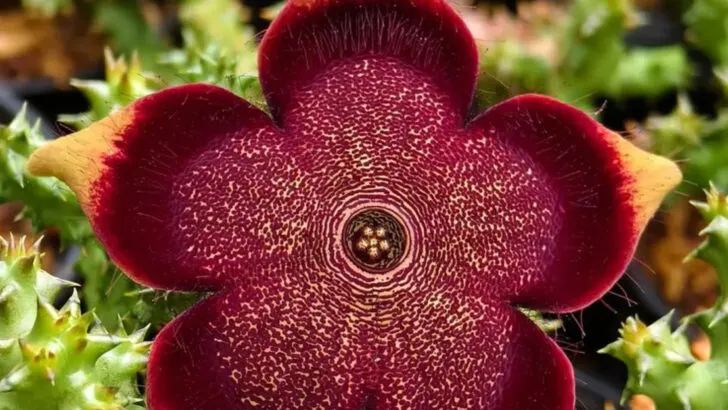Most people think of cacti and succulents as tough, spiky, and slow-growing plants that are better known for survival than showiness. But what many don’t realize is that some species don’t just tolerate extreme conditions—they reward patience with absolutely breathtaking blooms. We’re talking about vibrant colors, unusual shapes, and flowers that appear almost overnight, transforming your low-maintenance pots into a true spectacle.
From windowsill-friendly succulents to towering desert giants, there are varieties that can burst into bloom with very little effort. Some produce delicate petals that open at night, while others put on a firework-like display in summer, attracting pollinators and admirers alike. And here’s the real surprise: many of these flowering species are also some of the easiest to grow, even if you tend to forget to water.
In this roundup, you’ll discover 17 cactus and succulent species that combine resilience with remarkable beauty. Whether you’re growing on a sunny balcony, in a bright indoor corner, or even a dry garden bed, these plants prove that you don’t need lush tropical conditions to enjoy spectacular flowers—just the right species and a bit of sunlight.
Echinopsis
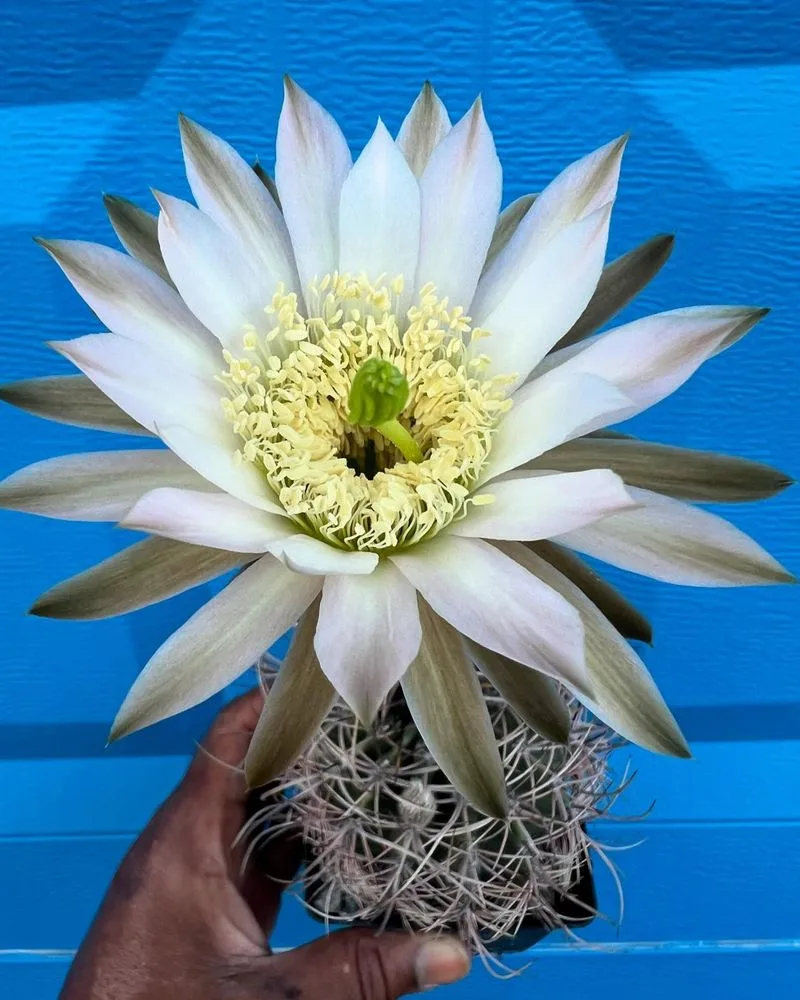
Known for its dazzling display, Echinopsis offers a visual treat when its enormous, trumpet-like flowers burst open. Originating from South America, these nocturnal blooms open at night and fill the air with a sweet fragrance. The flowers can reach up to six inches in diameter, showcasing a spectrum of colors, including pink, red, and white. Their short-lived nature makes them all the more precious, often blooming for just one day. Gardeners treasure Echinopsis for its dramatic display, a true spectacle in any collection. This cactus proves that resilience can be breathtakingly beautiful.
Christmas Cactus (Schlumbergera)
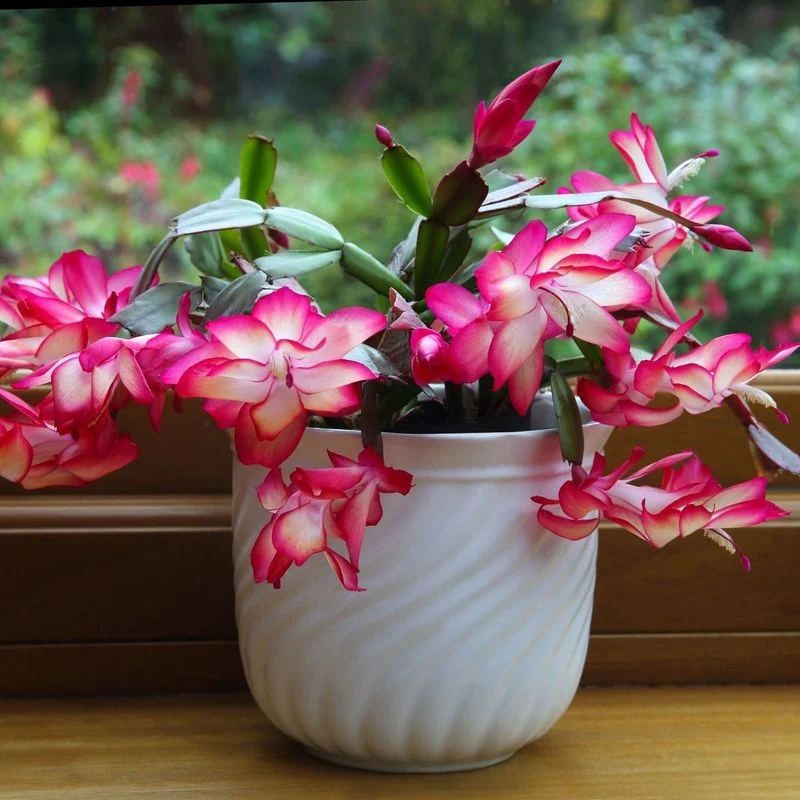
Forget the traditional holiday decorations—Christmas Cactus brings its own festive cheer with vibrant pink and red blooms. Originating from the coastal mountains of Brazil, this plant defies its prickly name with delicate, arching flowers. Blooming in the heart of winter, it’s a delightful surprise amid the cold season. Its cascading flowers offer a colorful contrast to its green segmented leaves. Ideal for indoor cultivation, it’s a hardy option for anyone seeking to bring the outdoors in. The Christmas Cactus is a seasonal joy that’s easy to nurture.
Easter Cactus (Hatiora gaertneri)
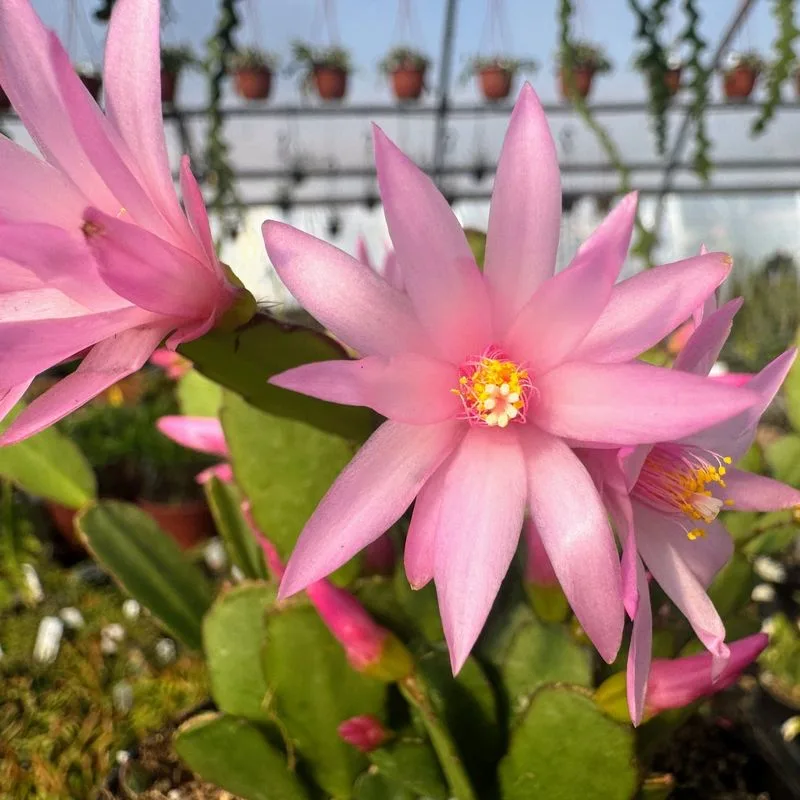
Easter Cactus, unlike its winter-blooming relatives, greets spring with bursts of red and pink. Native to Brazil’s rainforests, it thrives in humid conditions. The flowers emerge from segmented stems, opening to reveal star-shaped blossoms. Their timing around Easter gives this plant its cheerful name and reputation. As an indoor plant, it benefits from bright, indirect light and moderate watering. It’s a perfect companion for those celebrating the renewal of spring inside their homes. The Easter Cactus is both a conversation starter and a stunning seasonal decoration.
Desert Rose (Adenium obesum)
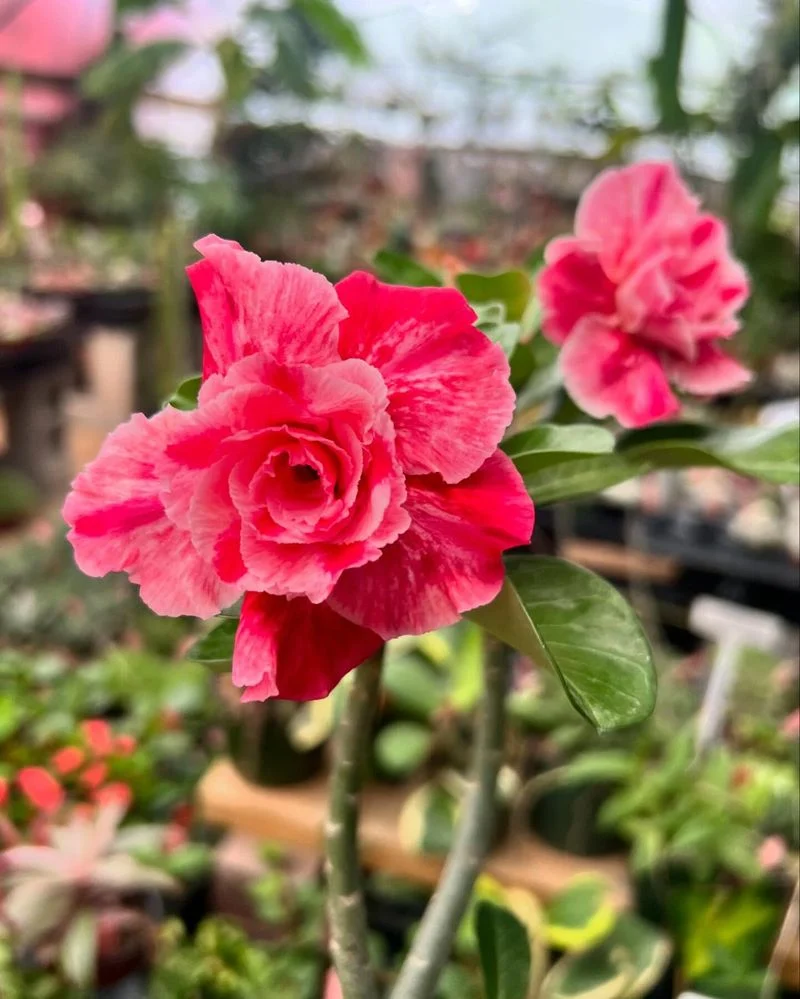
Despite its name, the Desert Rose isn’t a rose at all but a succulent with a flair for dramatic blooms. This plant thrives in arid climates, producing striking pink flowers against a backdrop of thick, green leaves. Native to the Sahel regions of Africa and the Arabian Peninsula, it’s well-suited to sunny, dry conditions. The bulbous trunk stores water, a testament to its survival skills. As an ornamental plant, it captivates with its exotic appearance and resilience. Perfect for those who appreciate beauty with a touch of the extraordinary.
Queen of the Night (Epiphyllum oxypetalum)
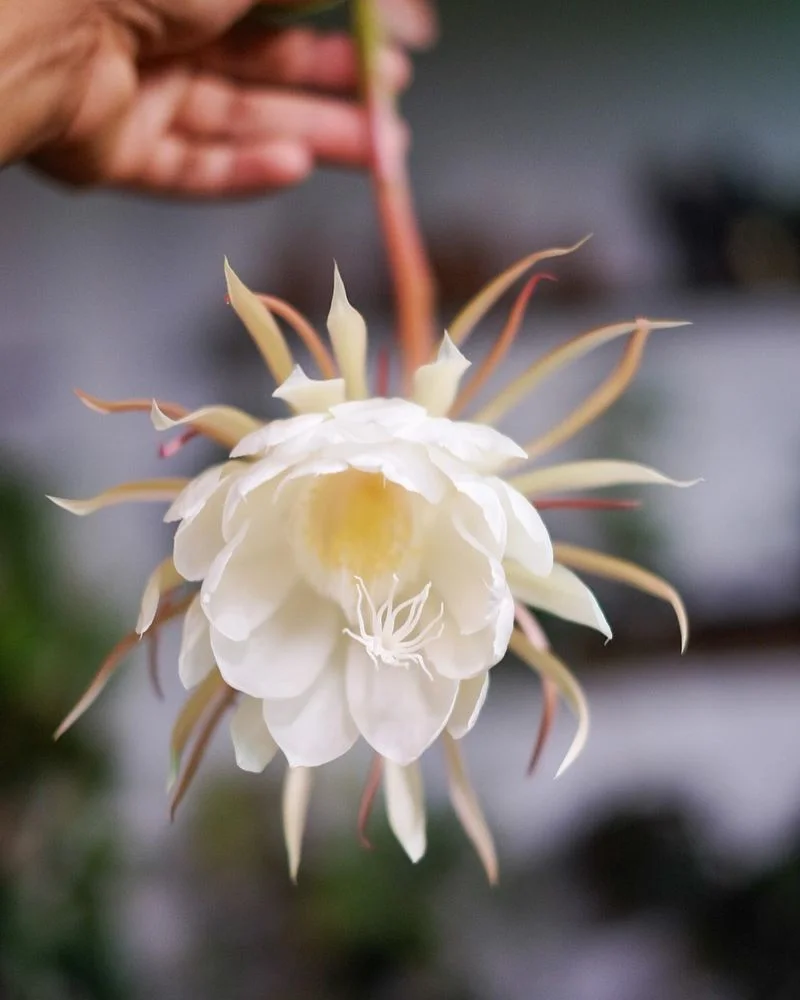
The night-blooming cereus, or Queen of the Night, is famed for its nocturnal splendor. This cactus unfurls its large, fragrant white flowers exclusively after dark, a spectacle often lasting just a single night. Native to Central America, it’s often grown indoors, where its tall, sprawling stems can be supported. Its rare, ephemeral blooms have inspired stories and admiration worldwide. For those lucky enough to witness it, the Queen of the Night offers a magical experience, as if nature itself is putting on a private show just for you.
Lobivia
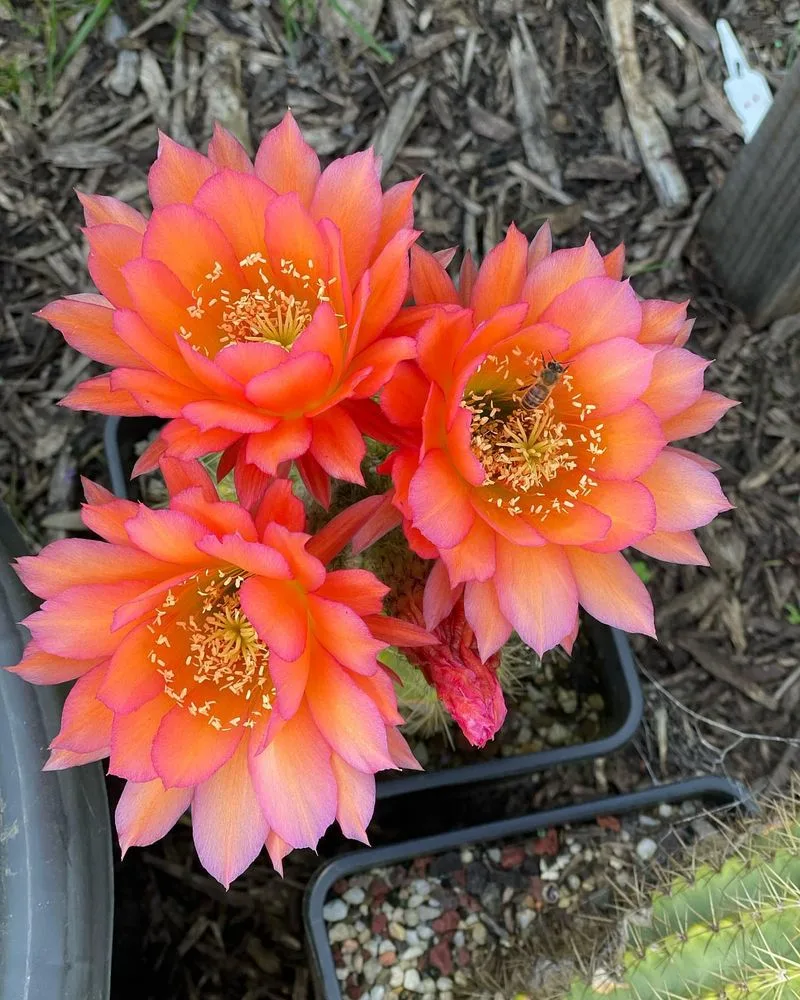
Compact yet captivating, Lobivia offers a multitude of colors in its floral display. These small cacti, native to the Andes, are known for their vibrant, cup-shaped flowers that appear in a variety of hues. Lobivia thrives in sunny spots and requires minimal maintenance, making it a favorite for beginners and collectors alike. Its blooms are short-lived but leave a lasting impression with their vivid colors. Whether on a windowsill or in a garden, Lobivia stands out as a jewel in the cactus world, offering endless fascination and beauty.
Crown of Thorns (Euphorbia milii)
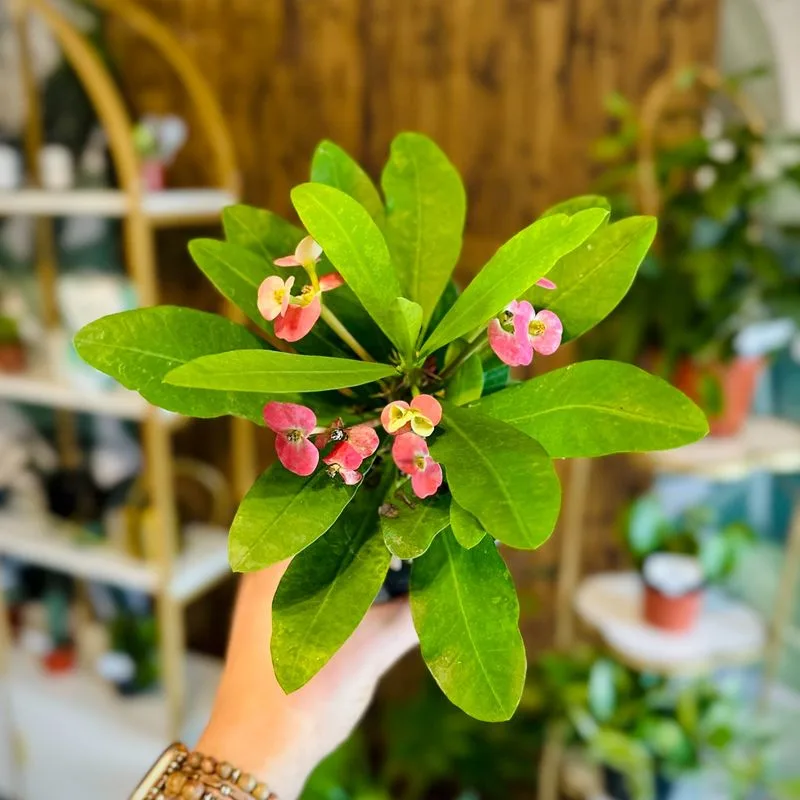
With a name both regal and thorny, the Crown of Thorns carries an air of mystique and beauty. Originating from Madagascar, its small, vibrant flowers stand in stark contrast to its spiky stems. This succulent thrives in bright, sunny environments, where it can flower year-round. Its ability to adapt to indoor conditions makes it a popular choice for sunny windowsills. Despite its prickly exterior, the Crown of Thorns symbolizes enduring love and resilience, making it a meaningful addition to any plant collection.
Stapelia

Stapelia, often called the carrion flower, intrigues with its unique appearance and scent. Native to South Africa, its star-shaped flowers mimic the texture and smell of rotting flesh—a clever trick to attract pollinators like flies. While its fragrance may not be for everyone, its intricate patterns and colors are undeniably captivating. The succulent stems are easy to grow, requiring minimal water and care. Stapelia is perfect for those who appreciate the quirky and unusual, offering a touch of the wild to any plant collection.
Orchid Cactus (Epiphyllum)
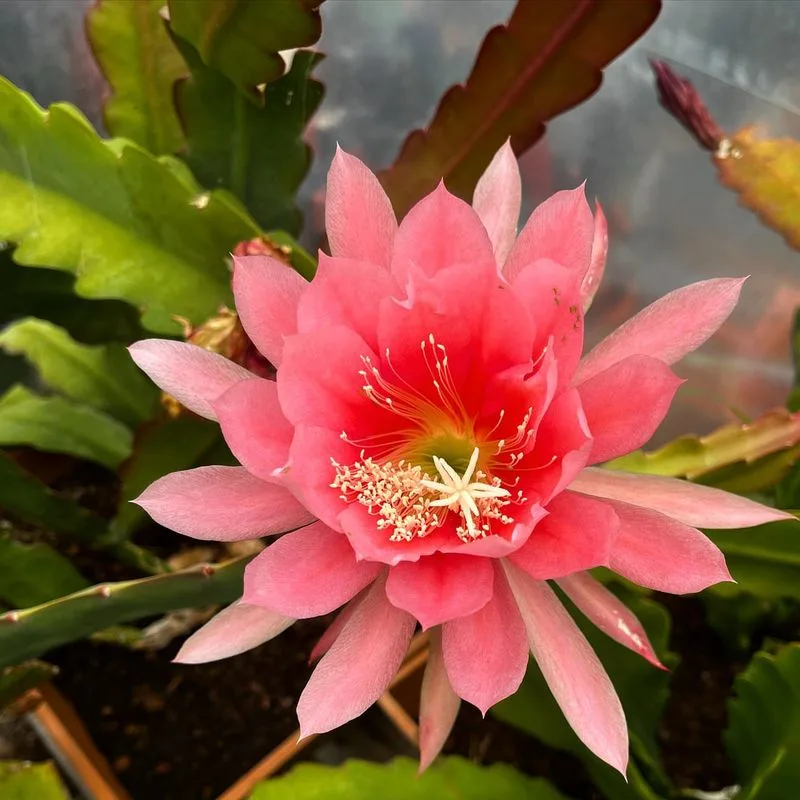
Bridging the gap between orchids and cacti, the Orchid Cactus captivates with its large, bright blossoms. Native to tropical regions, it thrives in warm, humid environments, often grown in greenhouses or as a houseplant. The flowers, which can span several inches, grace its trailing stems in a stunning display. With minimal care needs, it rewards growers with abundant, cascading blooms. The Orchid Cactus is a showpiece that brings a slice of the tropics to any home, perfect for those who yearn for exotic beauty without the fuss.
Torch Cactus (Trichocereus)
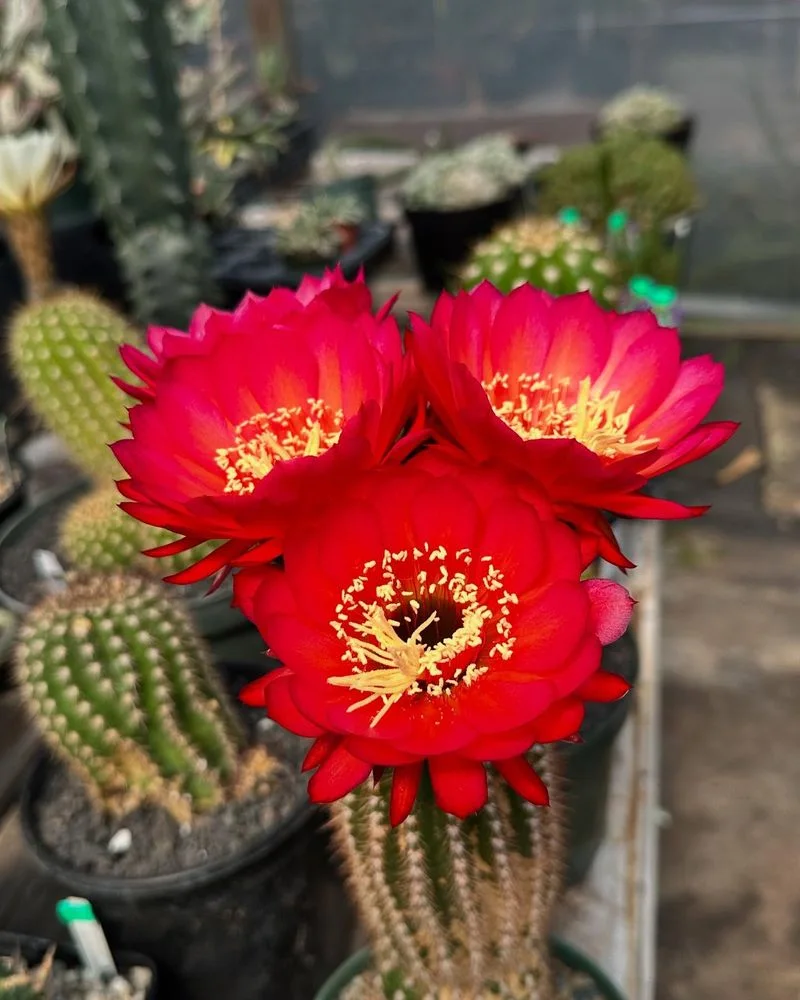
Tall and stately, the Torch Cactus lights up its surroundings with fiery blooms. Known for its elongated, columnar growth, it’s a striking presence in any desert garden. Native to South America, its large, brightly colored flowers are a dramatic contrast to its spiny exterior. The blooms appear in late spring and are a magnet for pollinators. Torch Cactus is an excellent choice for those looking to add height and color to their xeriscape designs. Its robust nature and eye-catching flowers make it a standout in the cactus world.
Prickly Pear (Opuntia)
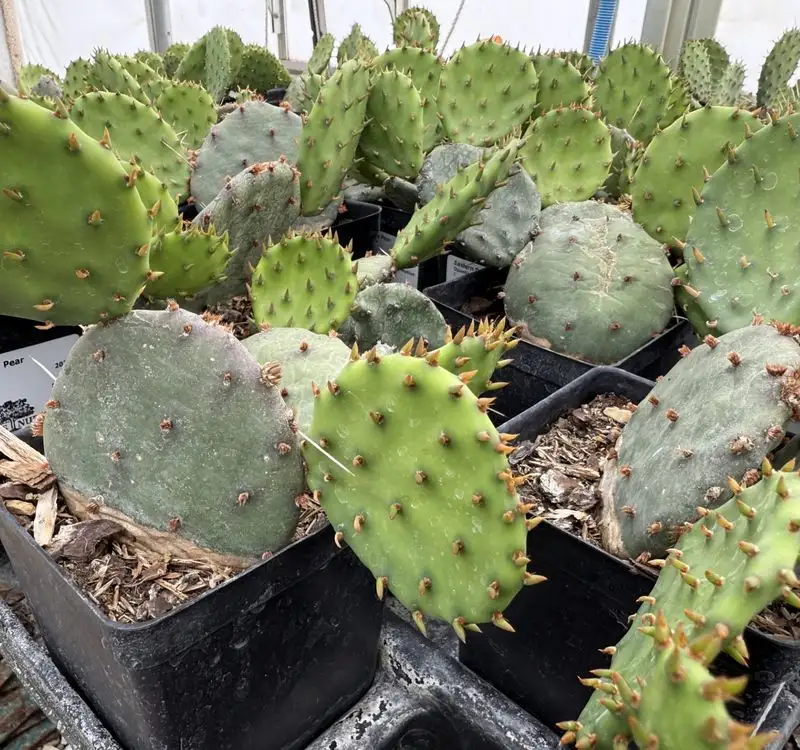
Famed for both its unique shape and culinary uses, the Prickly Pear delights with cheerful yellow flowers. Its flat, paddle-like pads are instantly recognizable, and its fruit is a popular treat in many cultures. Native to the Americas, it thrives in arid climates and can be grown in gardens or containers. The flowers bloom in spring and are quickly followed by the development of the prickly pear fruit. For those interested in edible gardening, this cactus offers beauty and bounty, a reminder of nature’s ability to provide and surprise.
Bishop’s Cap (Astrophytum myriostigma)
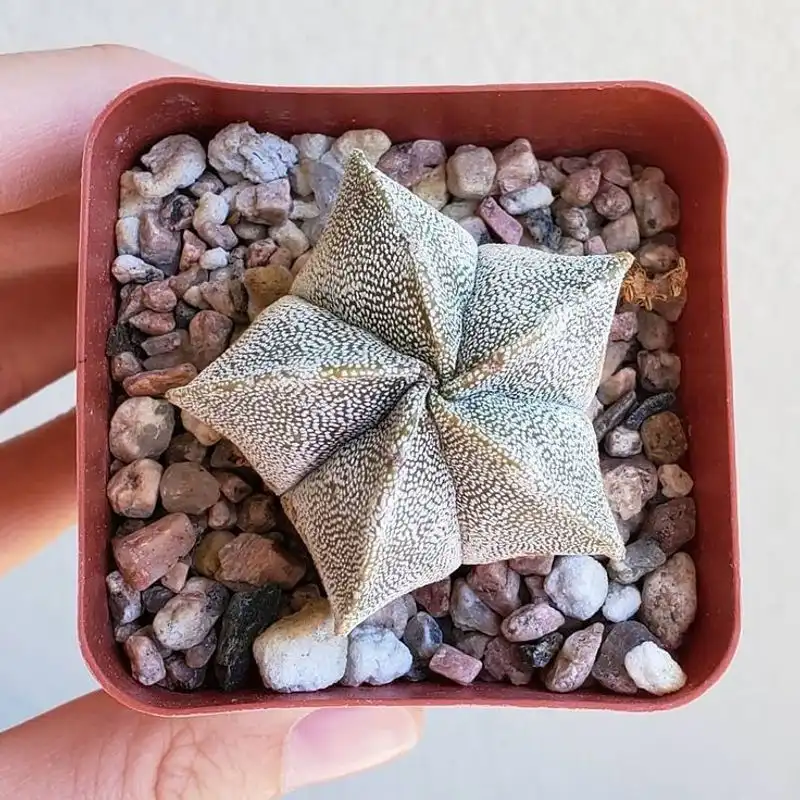
Bishop’s Cap might not boast the largest flowers, but its geometric beauty is unmatched. This spineless cactus, native to Mexico, showcases delicate yellow flowers atop a perfectly ribbed body. It’s an architectural marvel that adds interest to any collection. Preferring well-drained soil and lots of sunlight, it’s relatively easy to care for, making it ideal for beginners. The symmetry and form of Bishop’s Cap capture attention, inviting closer inspection and admiration. It’s a testament to the subtle elegance of cacti, where form and flower unite.
Aloe Vera
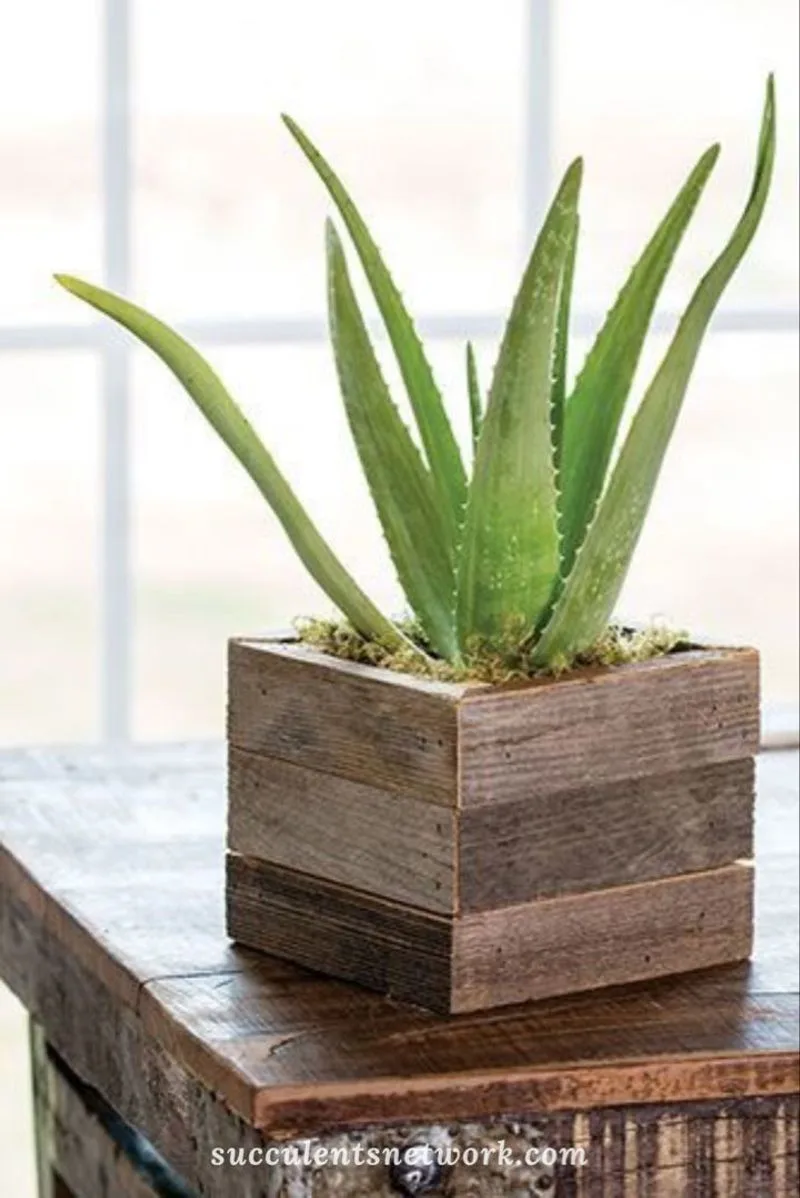
Aloe Vera is renowned for its soothing gel, but its flowering stalk is equally impressive. The tubular orange flowers rise dramatically from the center of its rosette of leaves. Originating from the Arabian Peninsula, it’s a hardy plant that thrives in sunny, well-drained spots. Often grown indoors for its medicinal properties, its flowers add an unexpected splash of color. Aloe Vera is a wonderful example of a plant that offers both beauty and utility, perfectly suited for gardeners who value practicality alongside aesthetics.
Agave
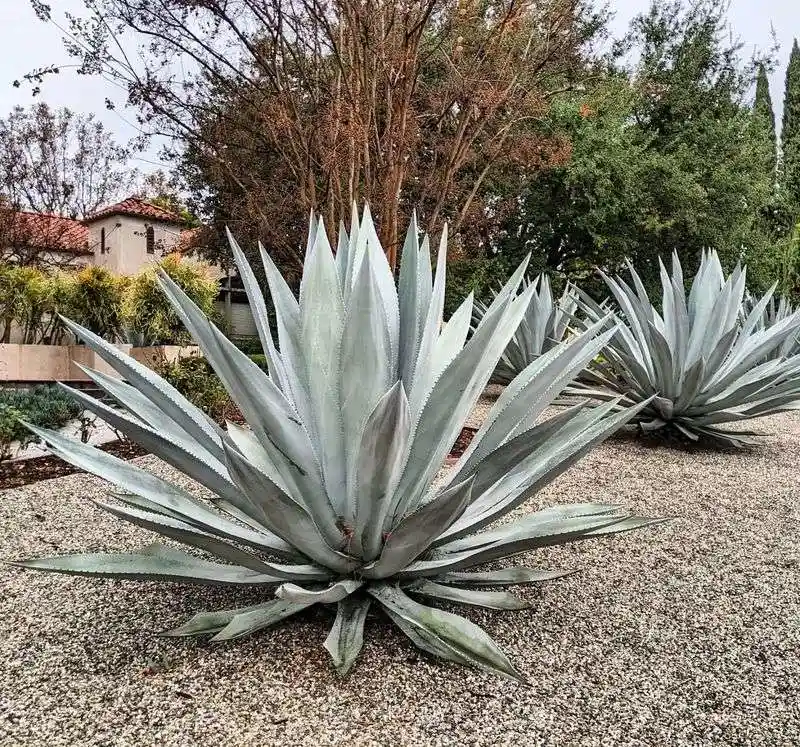
Agave’s grand flowering stalk is a sight to behold, often reaching several feet tall. Known for its robust, spiky leaves, this plant is native to the hot and arid regions of the Americas. The flowers, typically yellow, appear once in a lifetime, marking the end of the plant’s long growth cycle. After flowering, the Agave often dies, leaving behind seeds or offsets. It’s a dramatic finish to a plant that serves both practical and ornamental purposes. For those seeking a bold statement in their garden, Agave delivers.
Jade Plant (Crassula ovata)
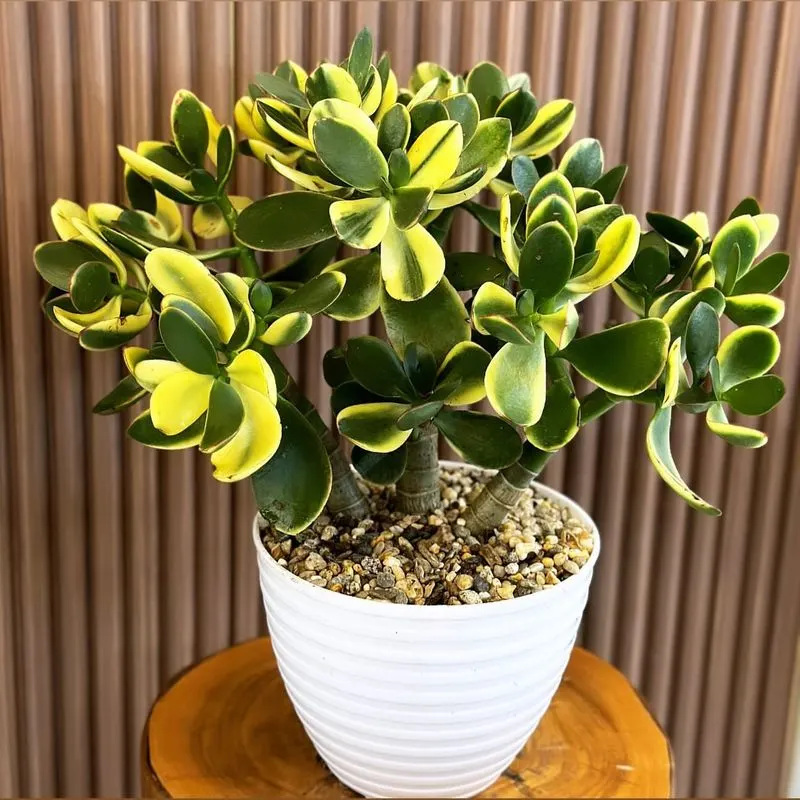
Jade Plant, often associated with good luck, offers more than just glossy leaves. Its small, starry flowers appear in clusters, usually in late winter or early spring. Native to South Africa, it’s a popular houseplant for its easy care and appealing form. The flowers add a gentle allure to its robust silhouette, providing a delicate contrast to its thick leaves. Known for its longevity, the Jade Plant is a cherished addition that grows with you over time. Its blooms are a fleeting but delightful reminder of new beginnings.
Kalanchoe
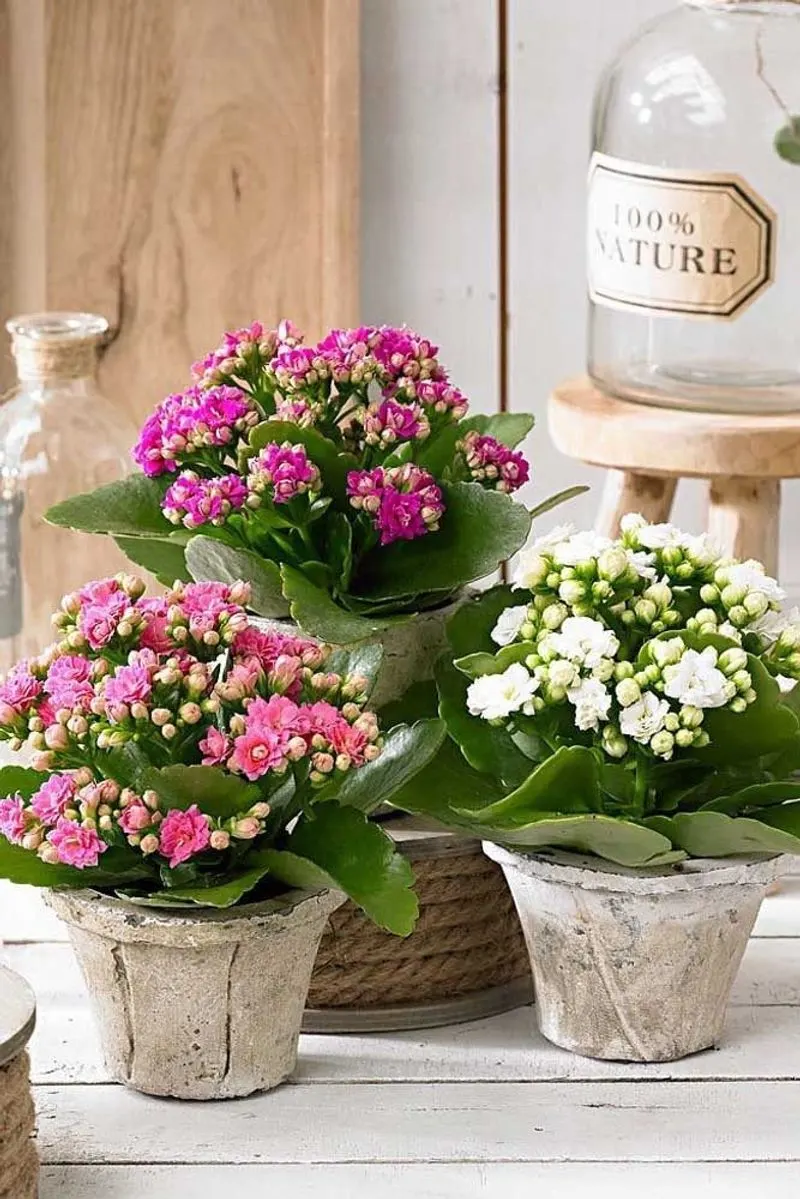
Kalanchoe is a vibrant houseplant known for its impressive floral display. The small, brightly colored flowers come in shades of red, pink, yellow, and white, providing cheerful color indoors. Originally from Madagascar, it’s a succulent that thrives with minimal care, requiring bright light and occasional watering. Its blooms last for weeks, offering long-lasting beauty and charm. Kalanchoe is perfect for those who appreciate a pop of color without the fuss. It’s a lovely way to brighten up a living space, bringing warmth and joy to any room.
Moon Cactus (Gymnocalycium mihanovichii)
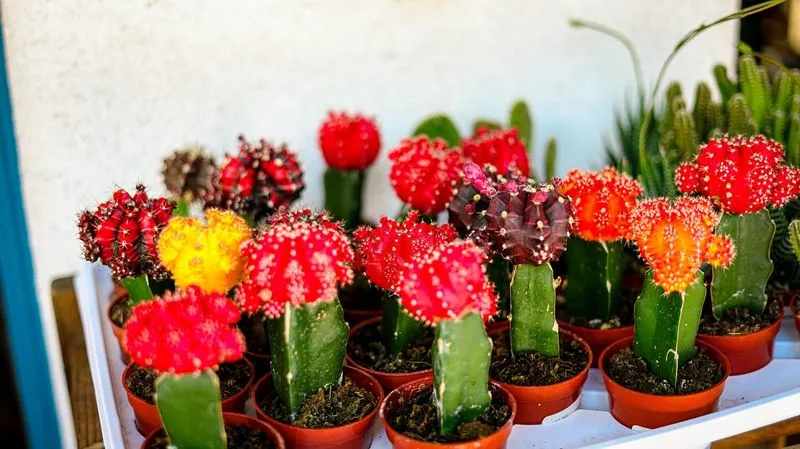
The Moon Cactus is a playful addition to any plant collection, with its colorful, grafted top and occasional bright blooms. Originating from South America, the vibrant upper section is actually a mutant that lacks chlorophyll, grafted onto a green base. When it flowers, it adds an extra touch of whimsy with small, red blooms. Ideal for bright indoor locations, it’s a conversation starter with its unique appearance. The Moon Cactus is a delightful example of nature’s creativity, a fusion of two plants that results in one charming specimen.
Senecio Rowleyanus (String of Pearls)
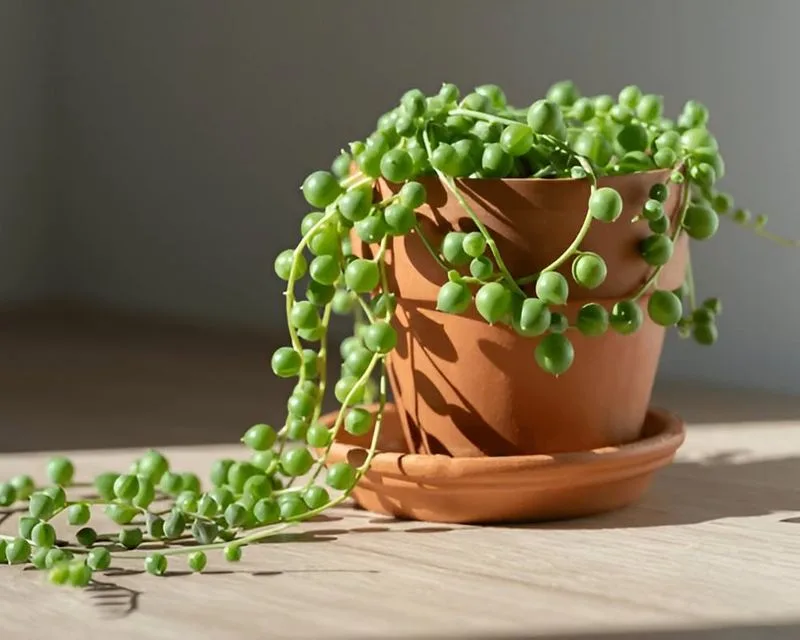
With its trailing strands resembling pearls, this plant captivates with its unique form and delicate flowers. The String of Pearls produces small, white, daisy-like flowers that emit a cinnamon scent. Native to South Africa, it thrives in well-drained soil and indirect light. Often used in hanging baskets, it provides a lush, cascading effect that enhances any space. The flowers, while subtle, add an elegant charm to its already fascinating appearance. It’s a must-have for those who appreciate the unusual, offering both form and fragrance in one delightful package.

